Sinililled silmadele (Blue Flowers for Eyes)
[2023]
recycled white calsil bricks, endemic flora plantings, soil, laser-etched plywood, metalExhibited at HIDDEN, Rookwood Cemetery, curated by Kath Fries
Sinililled Silmadele (Blue Flowers For Eyes) comes from a deep feeling of disconnect to my ancestors I never met and never will. It forms an ongoing conversation revisiting the notion of the cenotaph, a traditionally ‘non-functional’ monument erected in honour of a person or group of people whose remains cannot be located.
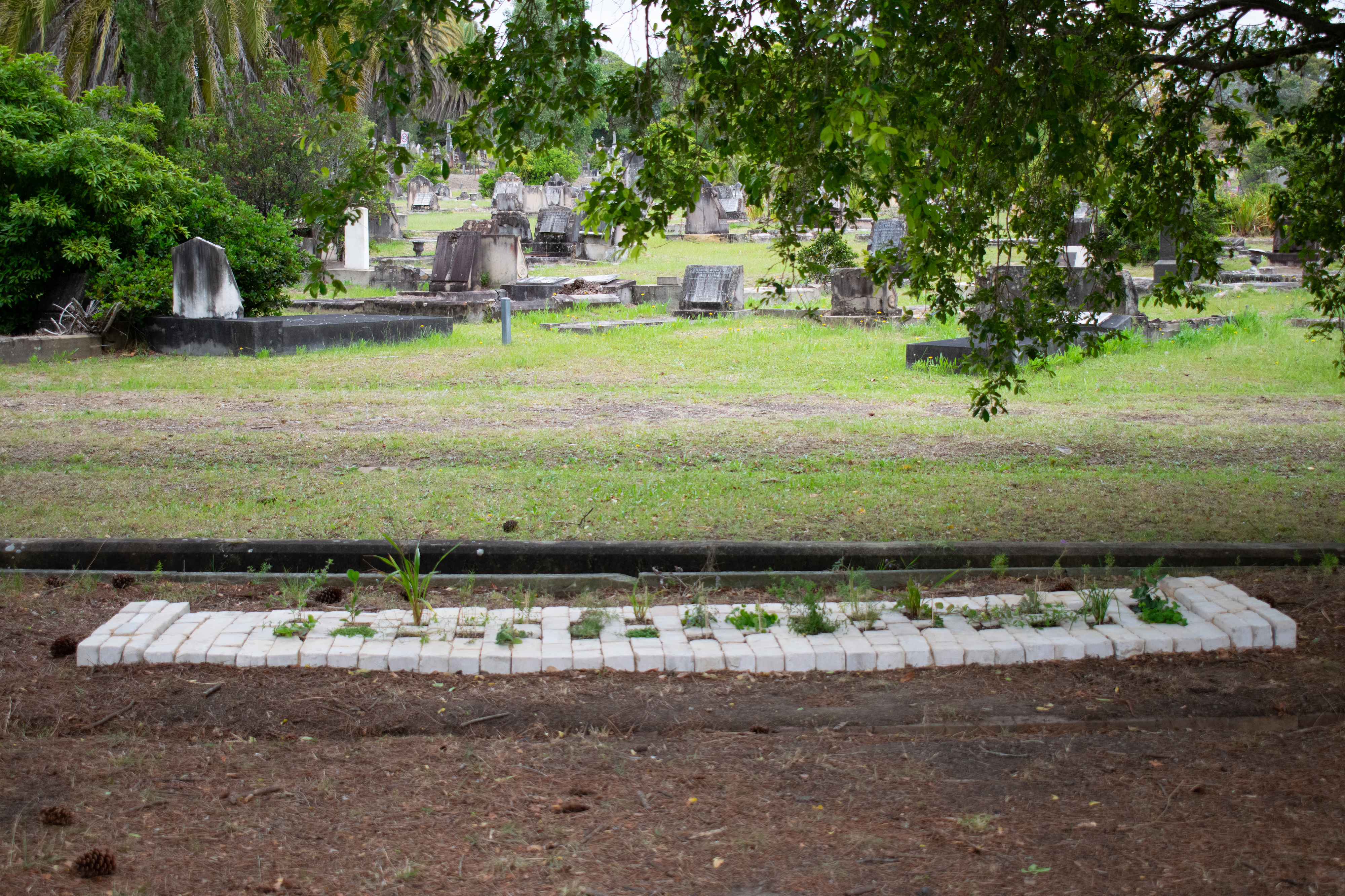
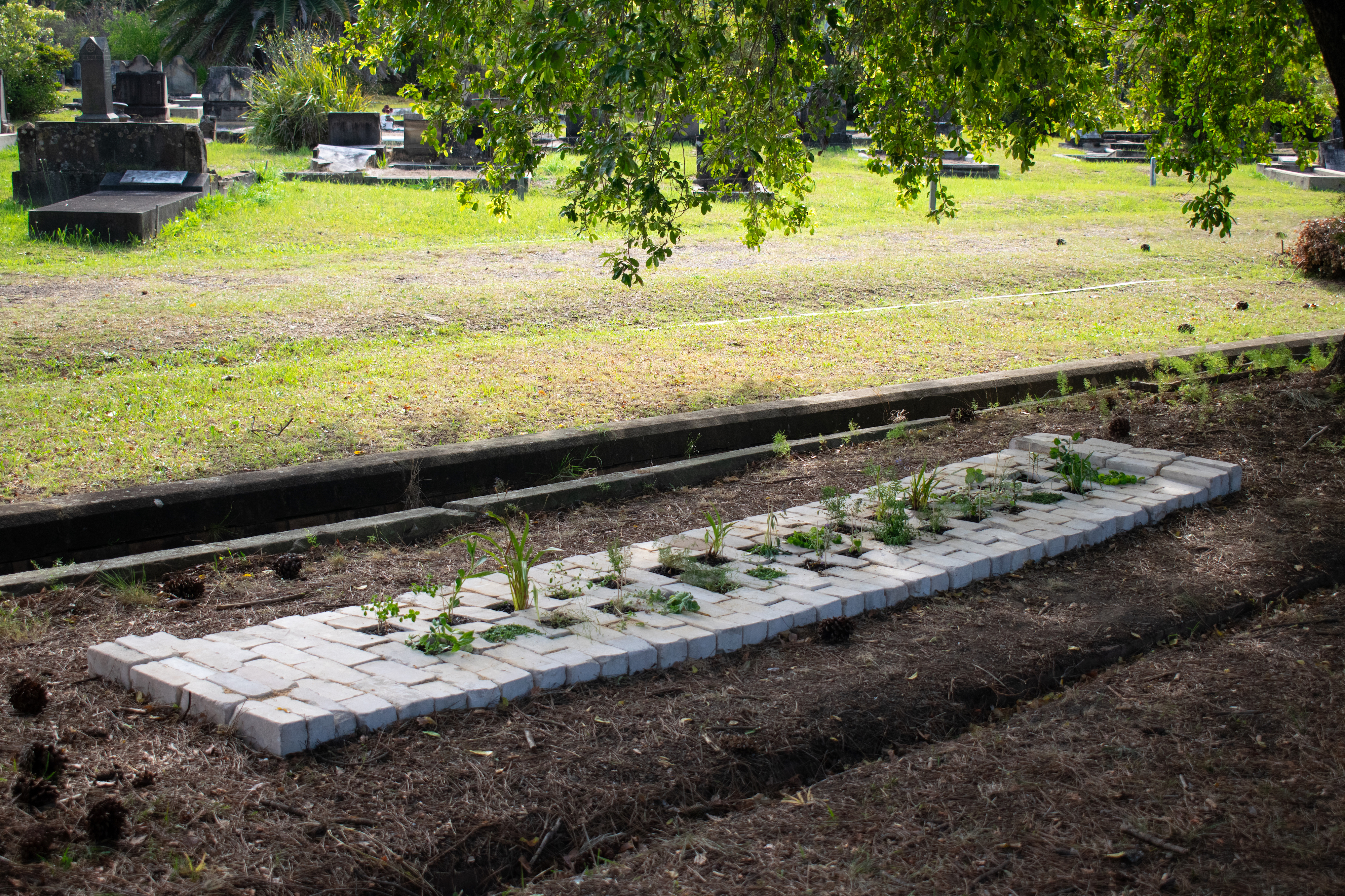
The form of my installation was inspired by the design of the Estonian Niche Walls found at Rookwood, erected by the Sydney Estonian Evangelical Lutheran (St. John’s) Congregation and consecrated by Reverend Einar Kiviste on the 17th November, 1968. The architect was Rein Jaaniste and it was built by Leo Tartu with additional decorative panels in copper by artist Karl Manberg. When visiting with my Vanamamma in June 2023, I was moved by the pocketed empty holes in the walls filled with textile flowers and persistent ferns & mosses growing in the mortar.
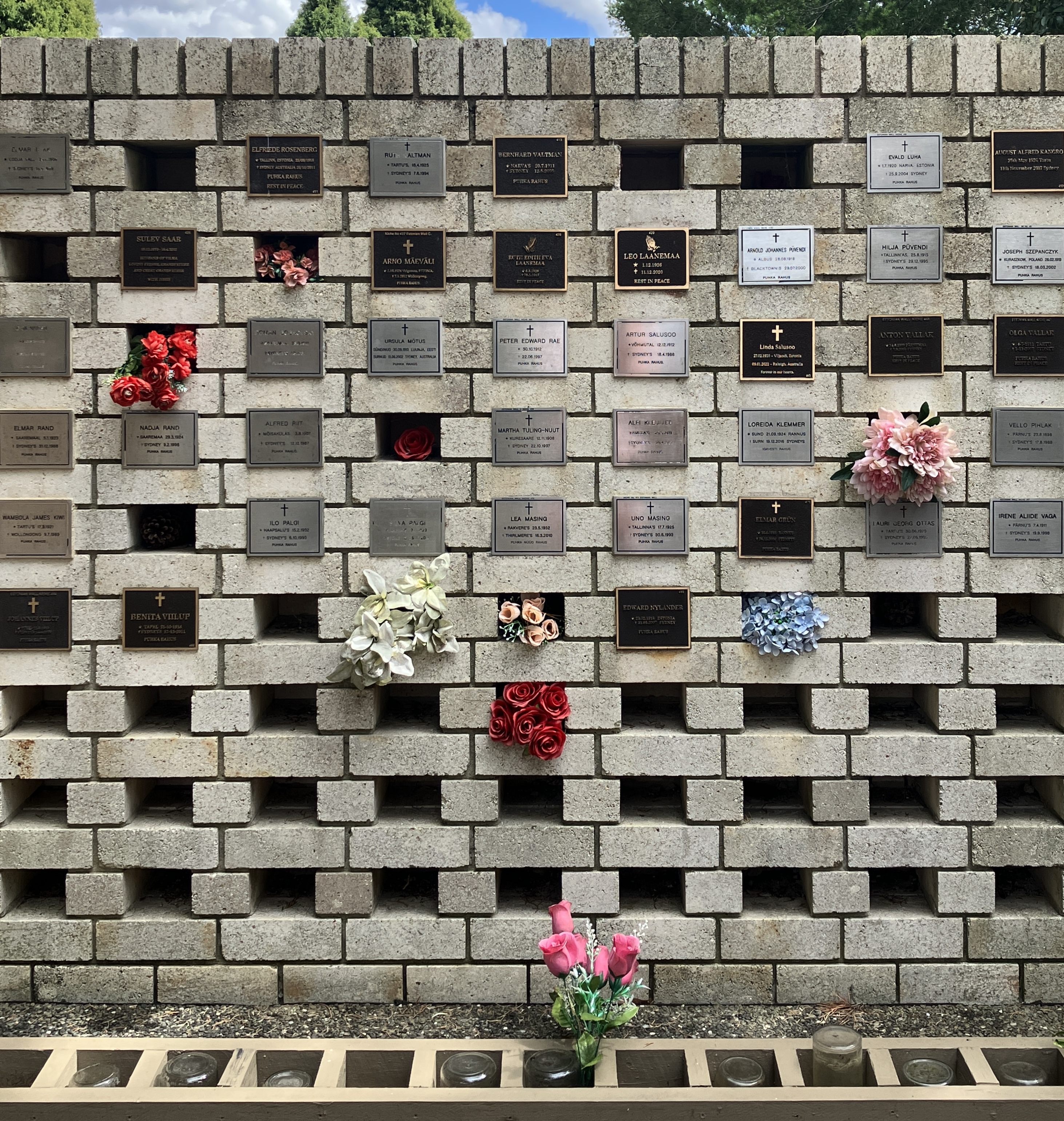
My work for HIDDEN features a large entrenched installation resembling both a toppled ‘fourth’ wall and a garden of salvaged calsil (calcium silicate) bricks from The Brick Pit in Smithfield. Within the holes meant for cremated remains, 32 endemic flowering plants grow from the earth tended to by my grandmother, mother and myself since July 5th, 2023 purchased from both Indigigrow in La Perouse and HARVEST Seeds & Native Plants Nursery in Terrey Hills.
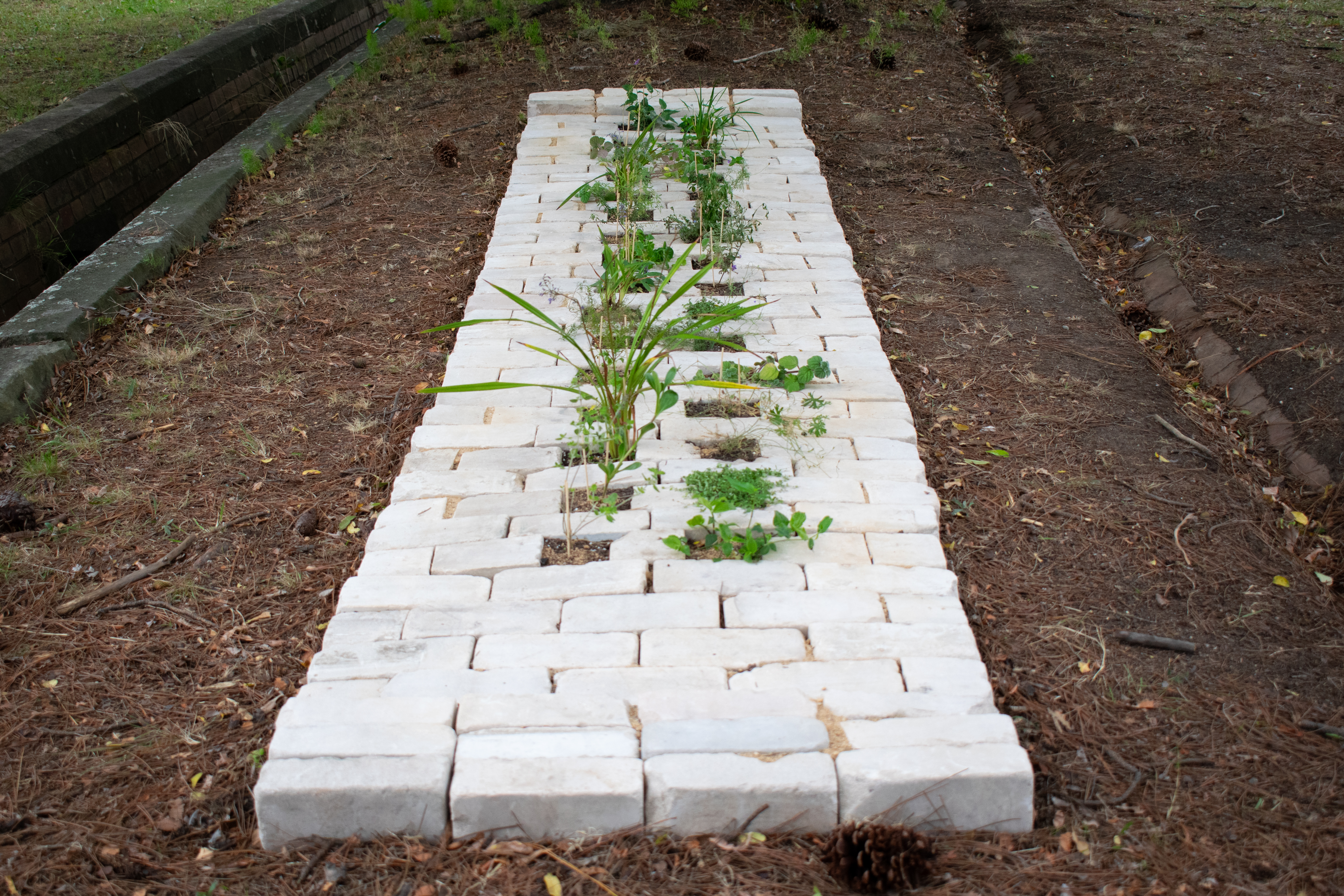

The plants include:
- Hardenbergia violacea var. Rambosea
- Viola hederacea
- Podocarpus elatus
- Patersonia glabrata
- Thysanotus tuberosus
- Commelina cyanea (initially a planting of Isotoma fluviatilis)
- Plectranthus cremnus
- Dampiera purpurea
- Dianella sp. caerulea/longifolia
- Zieria prostrata
- Trachymene coerulea
- Brachyscome multifida
- Westringia fruticosa
- Lobelia andrewsii
- Viola hederacea
- Plectranthus parvifolius
- Ajuga australis
- Dampiera pupurea
- Dianella congesta
- Pratia puberula
- Brachyscome multifida
- Wahlenbergia gracilis
- Prostanthera scutellaroides
- Plectranthus cremnus
- Scaevola albida var. albida
- Geranium solanderi
- Dianella sp. caerulea/longifolia
- Wahlenbergia gracilis
- Scaevola calendula
- Lobelia pedunculata
- Prostanthera incana
- Commelina cyanea
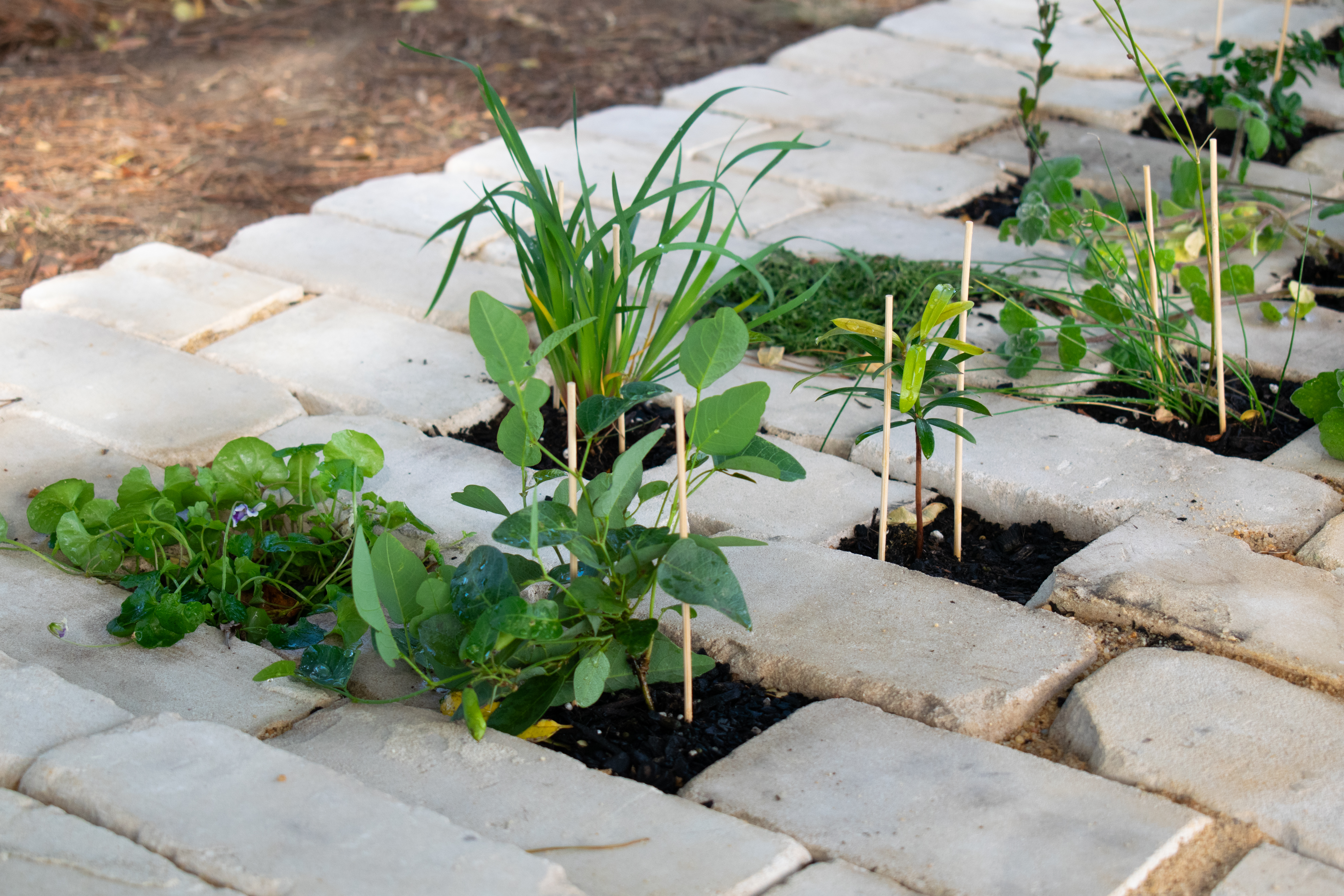
Of these, 14 species are endemic to the Cooks River/Castlereagh Ironbark Forest and Castlereagh Scribbly Gum Woodland of the Sydney Basin Bioregion where Rookwood Necropolis sits on Dharug Country. The information on the local Plant Community Types was done using the app “Trees Near Me”, a project of the Department of Planning and Environment. Of the remaining plants, six are found in the broader Sydney region, five found within New South Wales, and two from other states including Western Australia (Trachymene coerulea) and Tasmania (Pratia puberla).
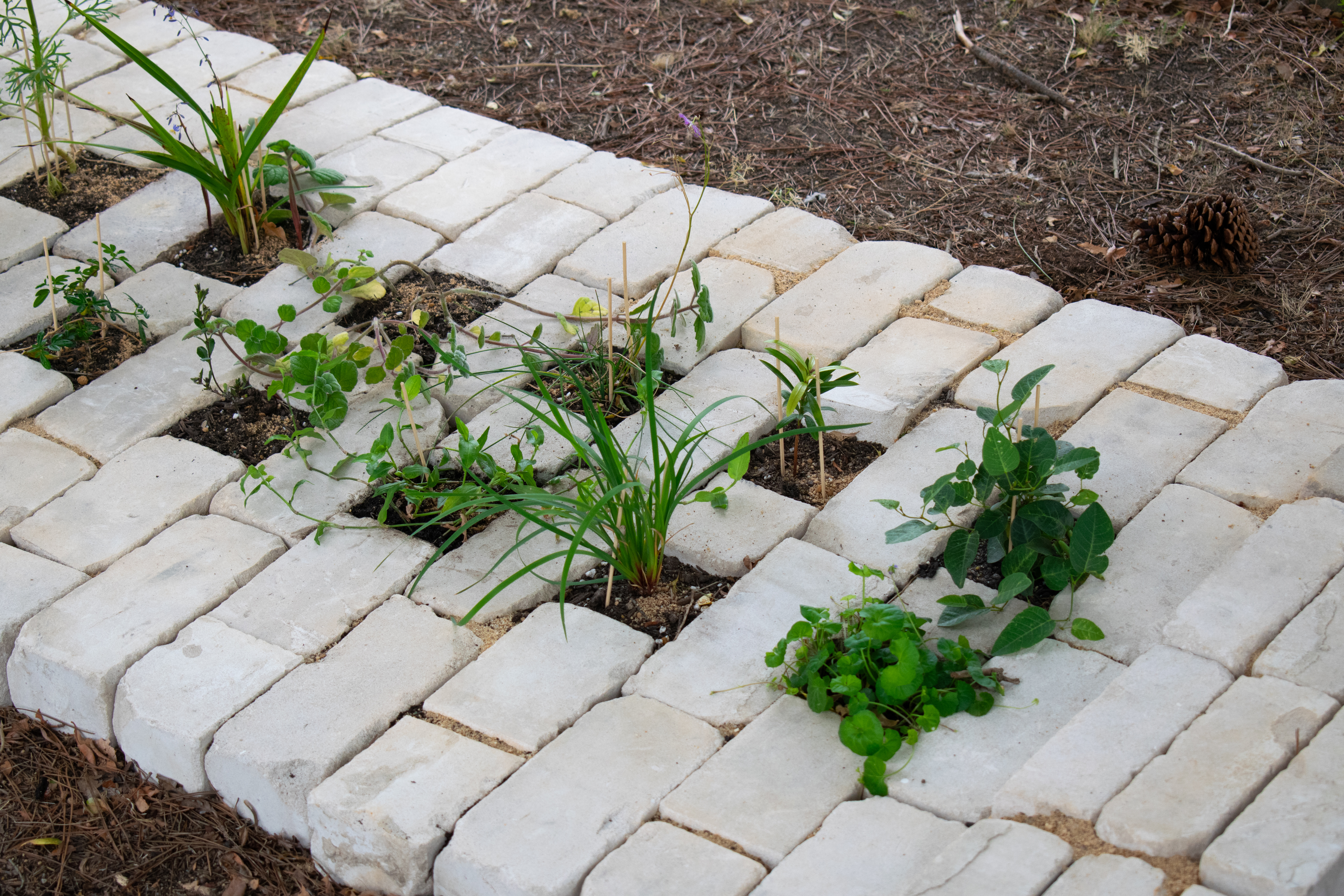
This research was of utmost priority as the intention for the work upon the conclusion of HIDDEN, is for the plants and bricks to be repurposed and implemented into the physical architecture at the Estonian Section at Rookwood. After consulting with Alan Taruste and Maret Noble from the Sydney Estonian Lutheran St. John's Congregation, a series of talgud, or “working bees”, are planned all going well, to help rejuvenate the cemetery and create a connection between younger generations and their ancestors and providing much needed upgrade and maintenance to the site proceeding a planned workshop on the 4th November by members of St. Johns Congregation.
The flowers in the title, work and words laser etched within the installation come from an ancient Estonian regilaul or runo song titled Ema haual or “Mothers Grave” where two orphans visit their parents graves, asking for them to rise and guide them — but they can’t, their bodies have transformed into the land and flowers above. You can listen to a recording from 1937 of a version of this song here: https://www.folklore.ee/pubte/eraamat/rahvamuusika/en/079-Ema-haual
«Oh, we two orphan children,
you fatherless, me motherless,
on St. John's day let's go to church,
a mourning kerchief at our waist,
we will wipe each other's eyes,
we will stroke each other's heads.
You will go to your father's grave,
I will go to my mother's grave:
‹Wake up, dear mama,
get up and comb my hair!›
‹I cannot wake up, daughter, my young one,
the grass grows over the soil,
the meadow hays on the grave,
violets over my eyes,
globeflowers over my brow.›
‹Oh, my gentle mama,
I will make a scythe from a sickle,
I will mow the grass off the soil,
the meadow hay off your grave,
the violets from your eyes,
the marigolds from your brow.
Then get up, my dear mama,
get up and teach your daughter!›
‹Daughter mine, oh so tiny,
may the breezes teach you gently,
may the heavens give you wisdom of mind,
for who has ever seen
a corpse dwell in the house,
a coldfoot in the cellar.›»
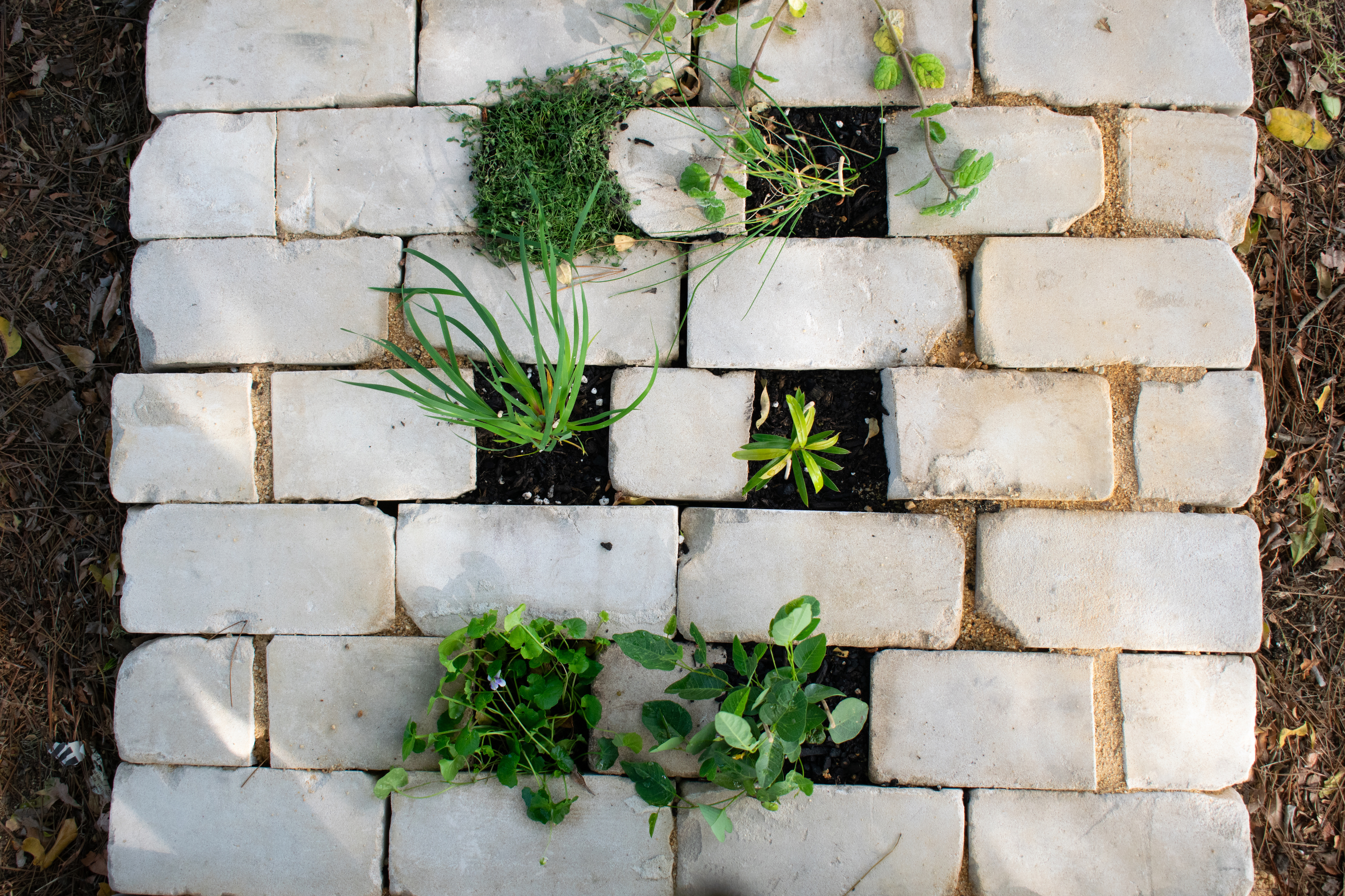
The regilaul was chosen not only for its poetic beauty, but for its prominence across Estonian literature including most notably in the epic tale “Kalevipoeg” where in the Seventh Tale, the protagonist visits their father’s grave:
«Ei või tõusta, poega noori,
Ei või tõusta, ei ärata.
Katki olen kaelaluusta,
Pihupõrmu põlveluusta,
Muru kasvand peale mulla,
Aruheina peale haua,
Sammal kasvand peale kalju,
Sinililled silma peale,
Angervaksad jalgadelle.
Tuleb tuuli, toob ju armu,
Tuleb päeva, pead silitab.»
English translation (from 1982 and 2011):
“I can’t get up young son / I can’t rise, dear young son,
I can’t wake up and rise: / Get up, wake up from my sleep.
my neck is broken in two, / At my neck bone, I am broken,
my kneecaps are almost turned to dust. / At my knee bones turned to dust,
The lawn has grown above the sod, / Green grass grows upon the earth,
fescue flourishes atop my grave; / Bentgrass on the barrow mound,
moss has overgrown my gravestone / Moss has grown upon the rock face,
and hepaticas cover my eyes, / Violets blue grow in my eyes,
dropworts grow above my feet. / Meadowsweet upon my legs.
Wind comes bringing grace, / As it blows the wind brings love,
Day comes, stroking your head. / The shining sun will stroke your head.”
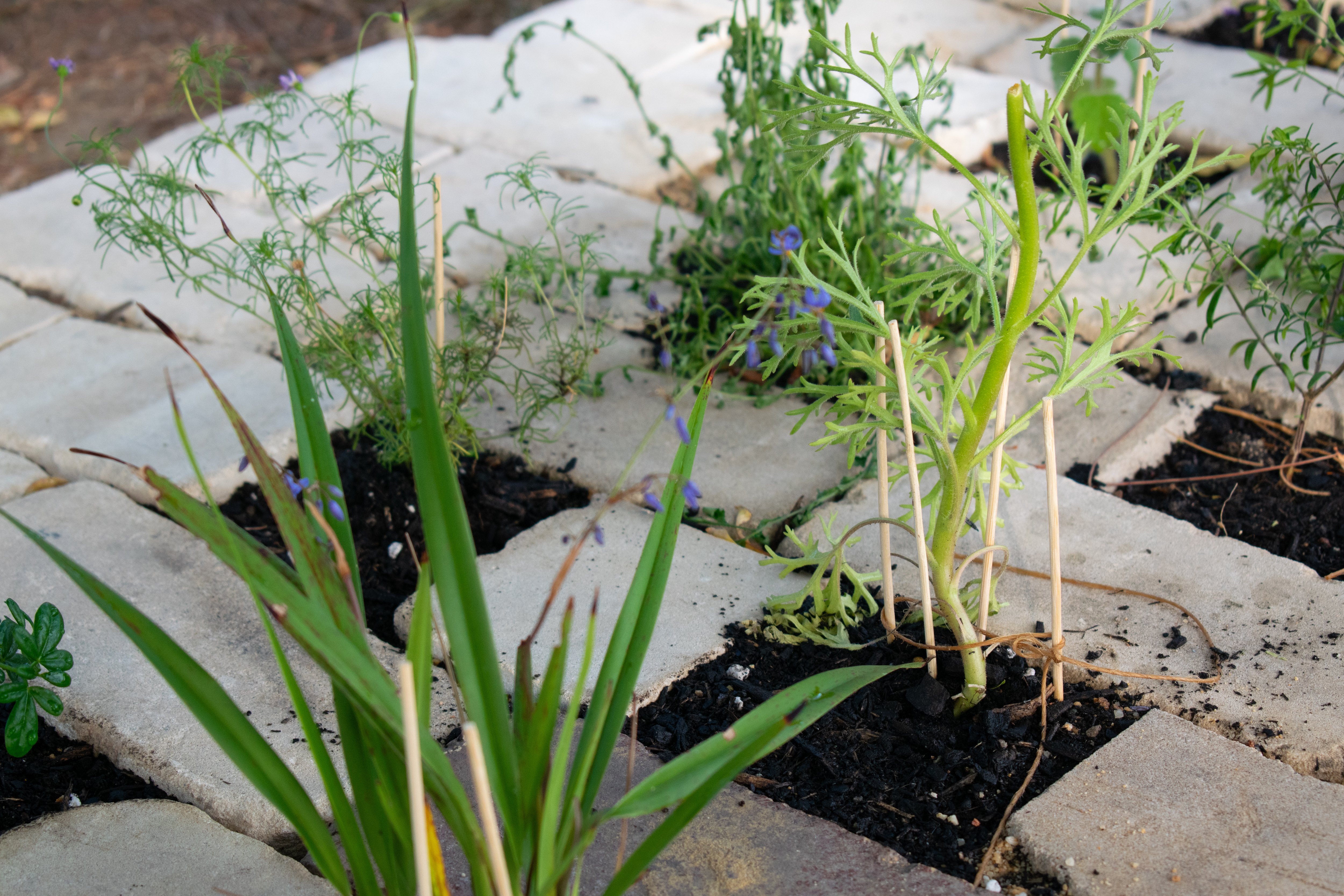
There are been multiple iterations of this song (at least 461 documented versions) and extensive research into this ‘song-type’ by Pikne Kama which particularly inspired my work: https://www.folklore.ee/folklore/vol68/kama.pdf and for anyone proficient in Estonian they can read and download the full Bachelor’s thesis by Pikne Kama on the archeological implications and potential through lyrical analysis here: https://www.academia.edu/9687093/Arheoloogiline_vaatepunkt_regilaulutüübile_Ema_haual
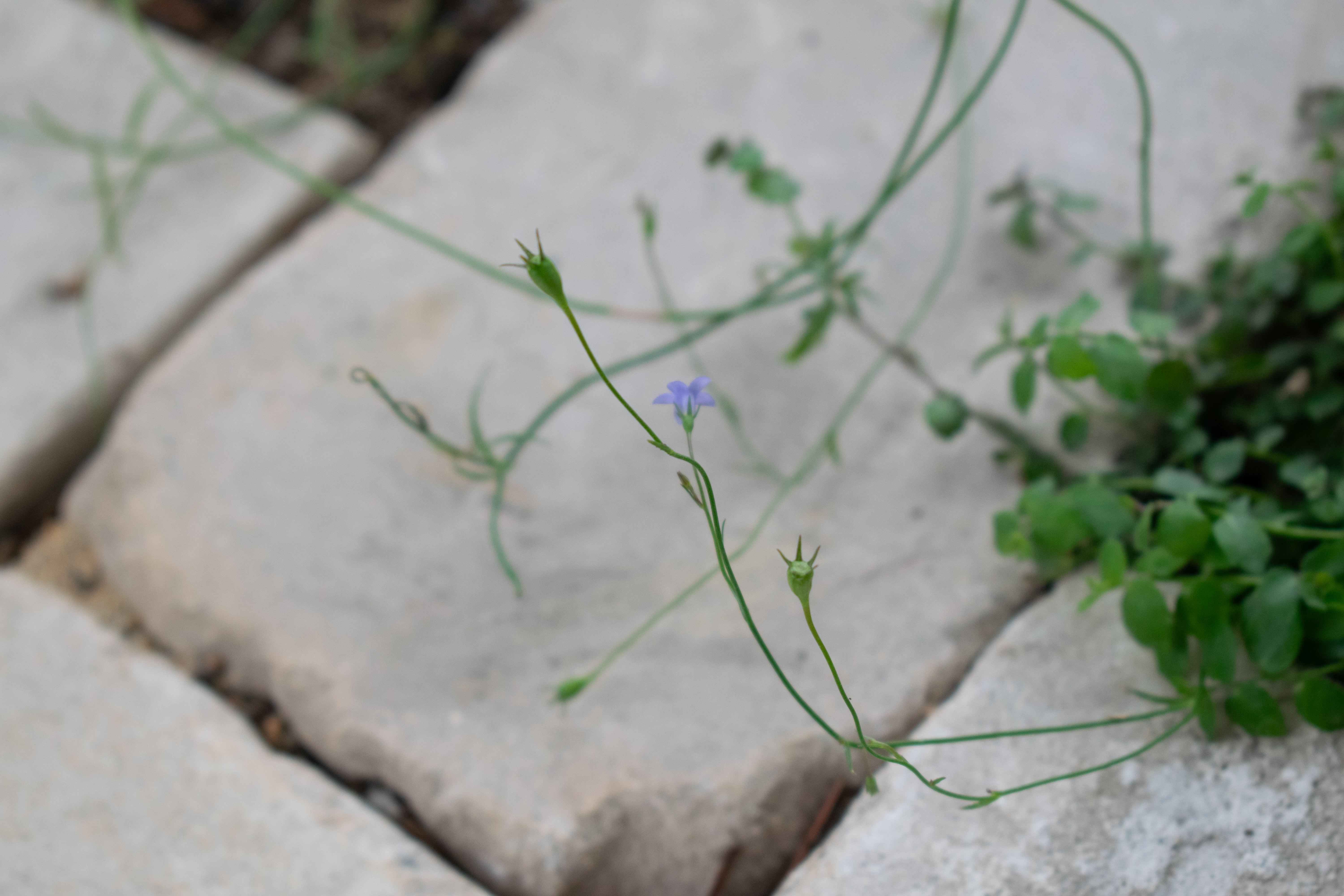
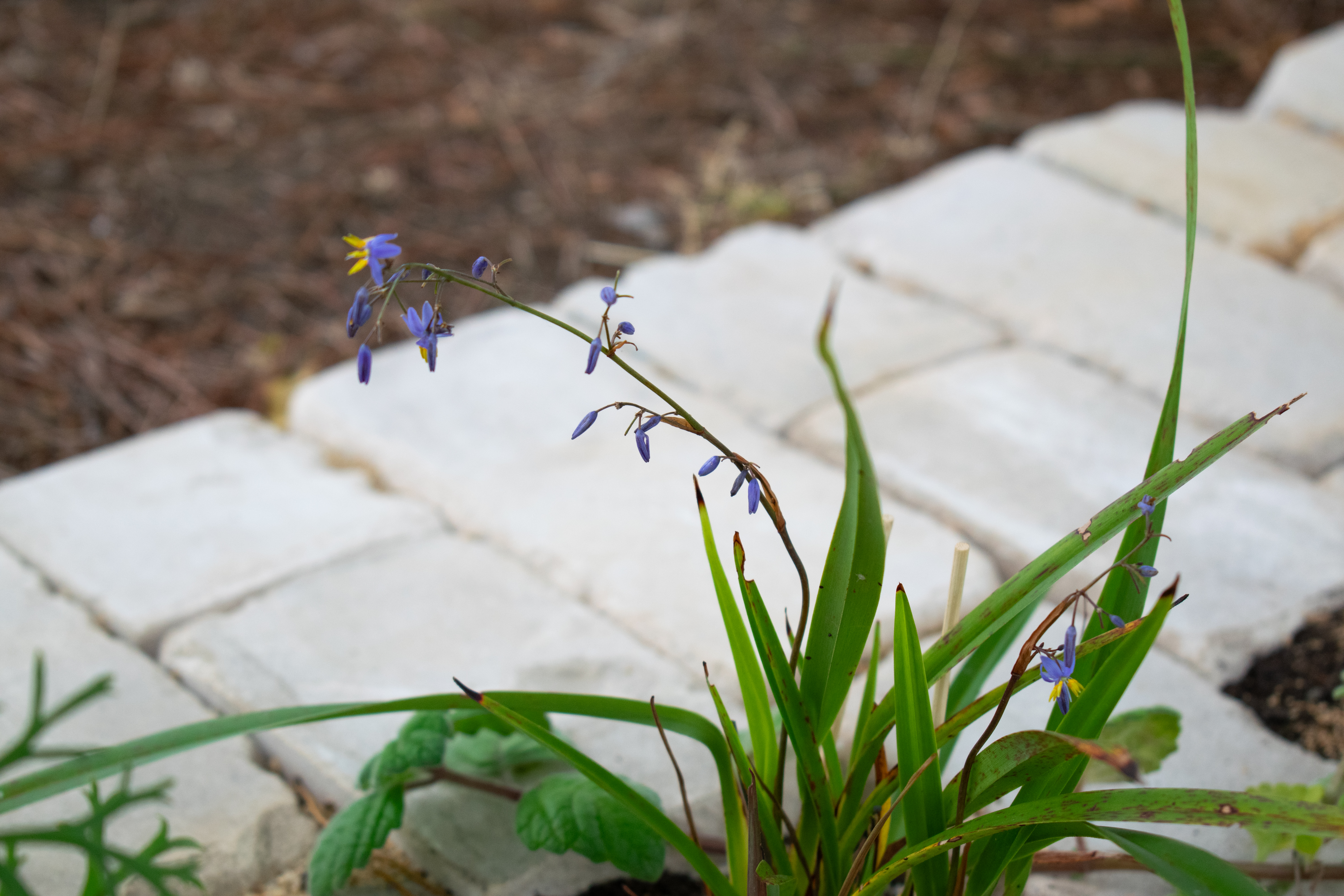
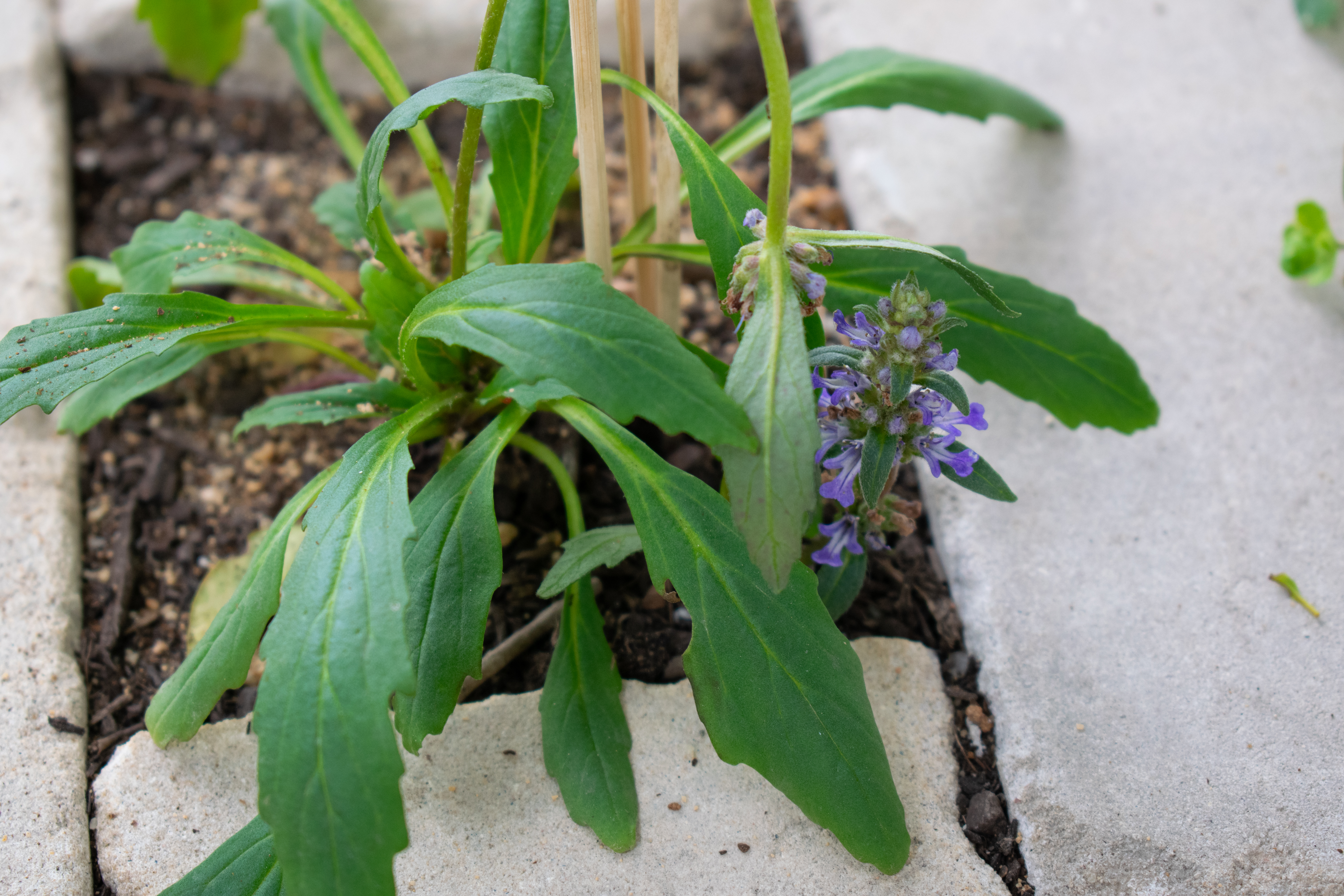
Like the parent in the regilaul, my wall lies prostrate within the landscape, unable to rise; a rangers grave pocketed by verdant niches, permitted to flourish and decay, ephemeral by nature depending on the care and upkeep tended to it. Since installation, every two days I have visited the site to check up and water the plants. The work will continue requiring maintenance and monitoring for both heat stress, water logging and any issues with feral hares eating the plants.
My work was significantly impacted after having visited Estonia in July 2023, particularly to the mälestusmärk (memory monument), of my family’s relatives who fought as resistance fighters known as Metsavennad, or “Forest Brothers”. The bunker, destroyed in 1946, lies buried within the depths of a mosquito-ridden birch forest in Ehmja, West Estonia, engulfed by patches of metsmaasikad (wild strawberries) and mustikad (wild blueberries).
When entering the bunker you are greeted by two sets of anonymous signs punched into sheet metal, likely tin, slowly consumed by the pine trees they are affixed to.
The first sign reads:
TÄHELEPANU. METSAVENNDADE PUNKRI
ÜMBRUSKONNA METS OLGU 100 MEETRI RAADJUSES INIMKÄTE POOLT PUUTUMATA ÜRKSES LOODUSES. KUS INIMENE OMA SAEGA SIIA KOHTA METSA PUID MAHAVÕTMA EI VÕI TULLA LAS SEE KOHT SIIN METSAS SÄILIMA VEEL PRAEGU JÄÄDA NENDE NOORMEESTE MÄLESTUSEKS KES SIIN METSAS LANNGESID.
ÜMBRUSKONNA METS OLGU 100 MEETRI RAADJUSES INIMKÄTE POOLT PUUTUMATA ÜRKSES LOODUSES. KUS INIMENE OMA SAEGA SIIA KOHTA METSA PUID MAHAVÕTMA EI VÕI TULLA LAS SEE KOHT SIIN METSAS SÄILIMA VEEL PRAEGU JÄÄDA NENDE NOORMEESTE MÄLESTUSEKS KES SIIN METSAS LANNGESID.
ATTENTION. FOREST BROTHERS' BUNKER
THE FOREST SURROUNDING THE BUNKER SHALL BE IN A 100 METRE RADIUS OF VIRGIN WILDERNESS LEFT UNTOUCHED BY HUMAN HAND. WHERE MAN CANNOT COME WITH HIS SAW TO CUT DOWN TREES, LET THIS PLACE BE PRESERVED HERE IN THE FOREST TO PRESERVE THE MEMORY OF THE YOUNG MEN WHO FELL HERE.
THE FOREST SURROUNDING THE BUNKER SHALL BE IN A 100 METRE RADIUS OF VIRGIN WILDERNESS LEFT UNTOUCHED BY HUMAN HAND. WHERE MAN CANNOT COME WITH HIS SAW TO CUT DOWN TREES, LET THIS PLACE BE PRESERVED HERE IN THE FOREST TO PRESERVE THE MEMORY OF THE YOUNG MEN WHO FELL HERE.
The second signs read:
LUGUPEETUD MÖÖDUJA
KUI TEIE JUHTUTE SIIT LÄBI MINEMA SIIS VÕTKE MÜTS PEAST JA HETKETS SEISATAGE NENDE KUUE NOOREMEHE METSAVENNA MÄLESTUSEKS KES LANNGESID SIIN OMA PUNKRI EES HAARANGUS PUNAVÄELASTE VASTU VÕIDELDES 1946 AASTA TALVEL 21 JAANUARIL 2006 aastal möödus 60 aastad.
METSAVENNDADE PUNKRI ASUPAIK EHITATUD NENDE OMA POOLT 1945 AASTA SUVEL. JÄI ELUTULT TÜHJAKS 1946 AASTA TALVEL PUNAVÄELASTE VASTU VÕIDELDES HAARANGU AJAL 21 JAANUARIL. SEE ASUPAIK TULEB HOIDA SIINKOHAL MÄLESTUSENA ALLES.
KUI TEIE JUHTUTE SIIT LÄBI MINEMA SIIS VÕTKE MÜTS PEAST JA HETKETS SEISATAGE NENDE KUUE NOOREMEHE METSAVENNA MÄLESTUSEKS KES LANNGESID SIIN OMA PUNKRI EES HAARANGUS PUNAVÄELASTE VASTU VÕIDELDES 1946 AASTA TALVEL 21 JAANUARIL 2006 aastal möödus 60 aastad.
METSAVENNDADE PUNKRI ASUPAIK EHITATUD NENDE OMA POOLT 1945 AASTA SUVEL. JÄI ELUTULT TÜHJAKS 1946 AASTA TALVEL PUNAVÄELASTE VASTU VÕIDELDES HAARANGU AJAL 21 JAANUARIL. SEE ASUPAIK TULEB HOIDA SIINKOHAL MÄLESTUSENA ALLES.
DEAR PASSERBY
IF YOU HAPPEN TO PASS THROUGH HERE, TAKE OFF YOUR HAT AND STAND FOR A MOMENT IN MEMORY OF THE SIX YOUNG FOREST BROTHERS WHO FELL HERE IN FRONT OF THEIR BUNKER FIGHTING AGAINST THE RED ARMY IN A RAID IN THE WINTER OF 1946. ON JANUARY 21, 2006, 60 years have since passed.
THE LOCATION OF THE BUNKER WAS BUILT BY THEM THEMSELVES IN THE SUMMER OF 1945. IT WAS EMPTIED IN THE WINTER OF 1946 FIGHTING AGAINST THE RED ARMY DURING THE RAID ON JANUARY 21. THIS LOCATION SHOULD BE KEPT HERE AS A MEMORY.
IF YOU HAPPEN TO PASS THROUGH HERE, TAKE OFF YOUR HAT AND STAND FOR A MOMENT IN MEMORY OF THE SIX YOUNG FOREST BROTHERS WHO FELL HERE IN FRONT OF THEIR BUNKER FIGHTING AGAINST THE RED ARMY IN A RAID IN THE WINTER OF 1946. ON JANUARY 21, 2006, 60 years have since passed.
THE LOCATION OF THE BUNKER WAS BUILT BY THEM THEMSELVES IN THE SUMMER OF 1945. IT WAS EMPTIED IN THE WINTER OF 1946 FIGHTING AGAINST THE RED ARMY DURING THE RAID ON JANUARY 21. THIS LOCATION SHOULD BE KEPT HERE AS A MEMORY.
Below is a short accompanying video made for the HIDDEN Satellite exhibition at ACU McGlade Gallery curated by Tracey Clements [14 October – 4 November 2023]
A section of the ‘Ema haual’ regilaul has been laser-etched on two swing signs situated beneath the pine trees, resembling a construction site and archeological dig site.
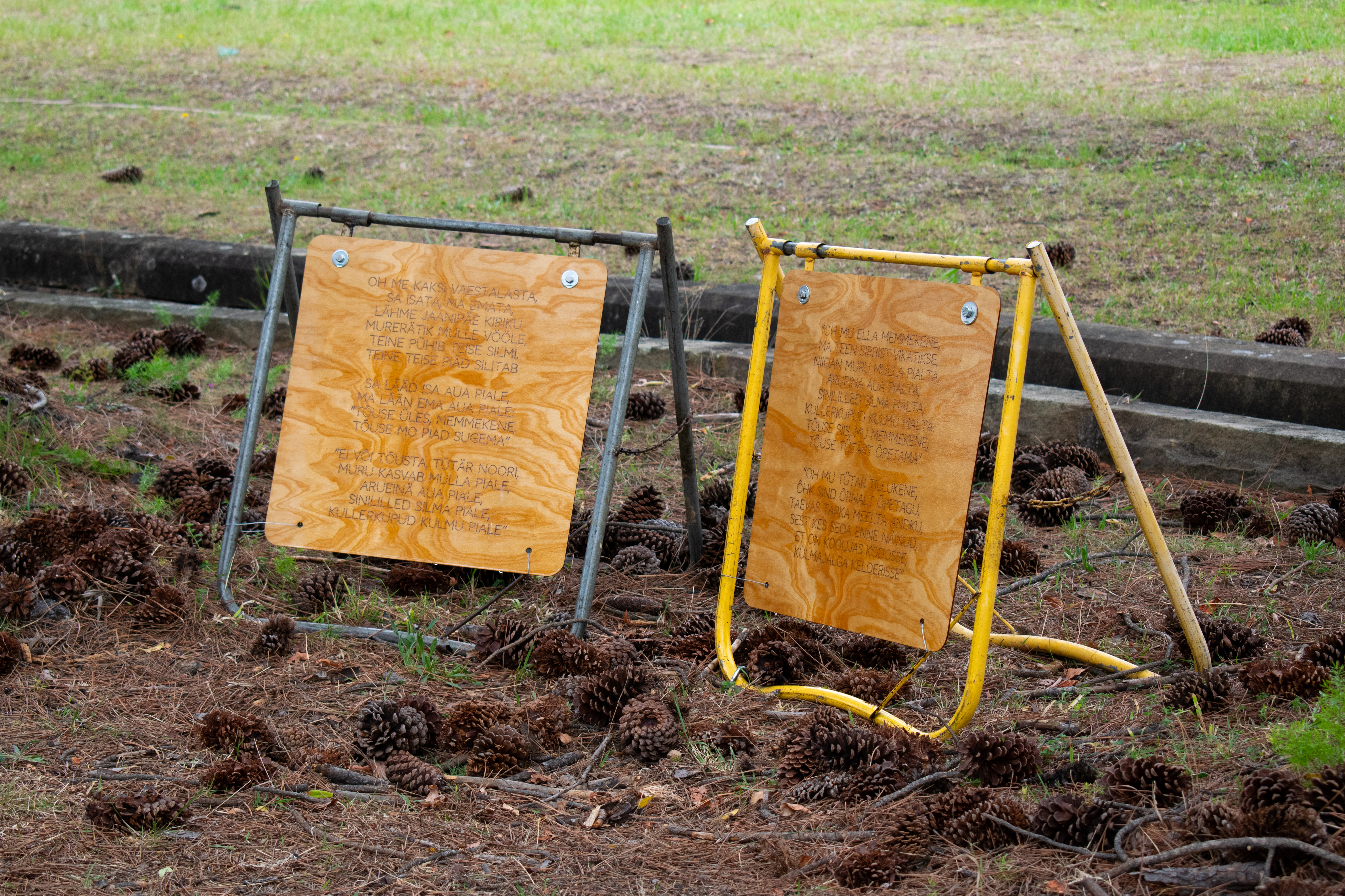
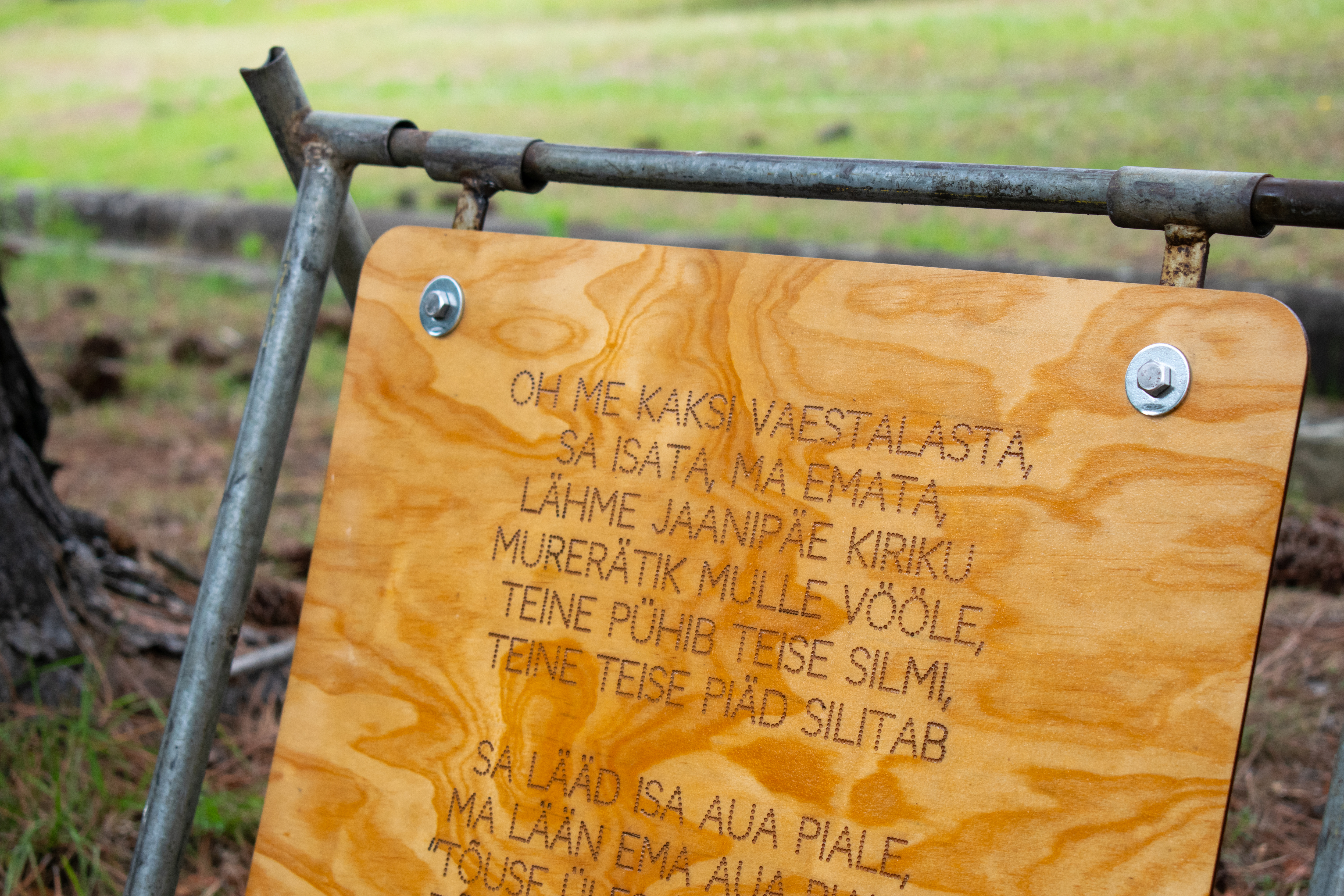
As I stood at the memorial, 1,300 kilometres north of an active war zone, I considered how my work exists within the context of the ongoing invasion and war in Ukraine as well as the ongoing displacement and genocide of Palestinians by the state of Israel, alongside many other conflicts around the world including the displacement of Armenians in Nagorno-Karabakh, the Free Papua Movement in West Papua to name just a few.
My work is not an attempt to make one feel good or comfortable with what is happening around me. It is neither an attempt to glorify the past by placing it within an etho-nationalist framework, but rather offers a place to mourn and reconcile the past. 200m away from my work sits a memorial to the victims of the Sri Lankan Civil War (23 July 1983 – 18 May 2009) and another 40m further is a memorial to the Jewish members who fought alongside the Commonwealth and Allied Armed Forces in both WW1 and WW2. The site of Rookwood is not apolitical, it represents many versions and retellings of an ongoing global tale of tragedy and resilience.
Sinililled silmadele acts not just as a personal memorial to the Metsavennad and my family, but for the partisan freedom fighters, guerilla warriors and resistance armies of the past and their ancestors present. Interconnected struggles of land sovereignty, self-determination, and decolonisation continue to this day. Violence continues to be embedded in the earth and legacies, rhizomatic and subterranean. These memories are shared across generations, dispersed across seas, transcending time and space.
Acknowledgments
Thankyou to the following individuals for making this work possible, from brainstorming and ideation, plant tending and gifting, shared knowledge and offering their labour for install and deinstall.
Mai Bell
Malle Lehtsalu
Pikne Kama
Kath Fries
Allan Taruste
Maret Nobel
Ester Hunt
Embi Hunt
Mati Hunt
Raj Mehta & The Brick Pit
Clare Milledge
Karen Manning
Rory Moy
Harry Mäe
Felix Parker
Courtney Bowd
Olivia Reily
Julie Clarke-Jones
Raelene Biledo Locke
Lachlan Chang
Linus Aisatullin
Edmund Milts
Courtney Bowd
Indigigrow
HARVEST Nursery
Marleena Oudomvillay
Rainer Ciar
Celine Cheung
Thankyou immensley to the HIDDEN Volunteers including:
Matthew Bahn, Alba Steven, Eylie Jones, Julie & Michael who assisted me with install and the breaking of bricks.
Malle Lehtsalu
Pikne Kama
Kath Fries
Allan Taruste
Maret Nobel
Ester Hunt
Embi Hunt
Mati Hunt
Raj Mehta & The Brick Pit
Clare Milledge
Karen Manning
Rory Moy
Harry Mäe
Felix Parker
Courtney Bowd
Olivia Reily
Julie Clarke-Jones
Raelene Biledo Locke
Lachlan Chang
Linus Aisatullin
Edmund Milts
Courtney Bowd
Indigigrow
HARVEST Nursery
Marleena Oudomvillay
Rainer Ciar
Celine Cheung
Thankyou immensley to the HIDDEN Volunteers including:
Matthew Bahn, Alba Steven, Eylie Jones, Julie & Michael who assisted me with install and the breaking of bricks.
